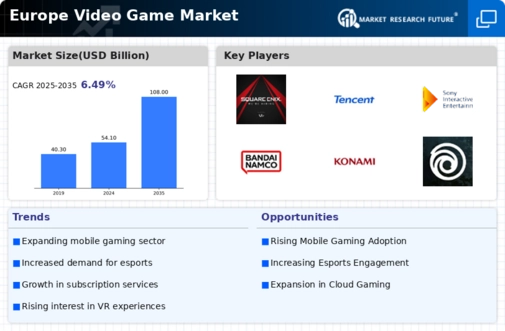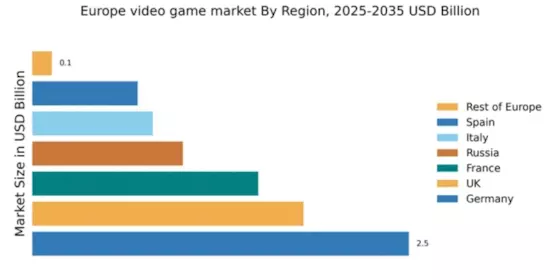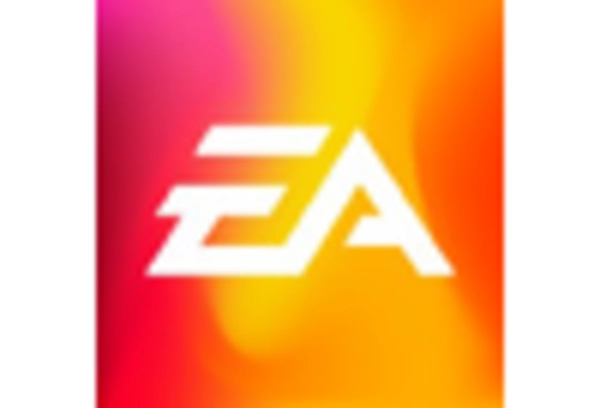Increased Focus on Game Accessibility
The video game market in Europe is witnessing a heightened emphasis on accessibility, ensuring that games are playable by a wider audience, including those with disabilities. Developers are increasingly incorporating features such as customizable controls, audio descriptions, and visual aids. This shift is not merely a trend but a necessity, as studies suggest that approximately 15% of the population in Europe has some form of disability. By 2025, the market for accessible gaming is projected to grow by 25%, reflecting a growing awareness and demand for inclusivity. This focus on accessibility not only broadens the consumer base but also enhances the reputation of the video game market as a socially responsible sector.
Rise of Subscription-Based Gaming Models
The video game market in Europe is adapting to the rise of subscription-based gaming models, which offer players access to a library of games for a monthly fee. This model has gained traction, with platforms like Xbox Game Pass and PlayStation Now leading the charge. In 2025, it is estimated that subscription services will account for over 30% of the total gaming revenue in Europe, indicating a shift in consumer spending habits. This trend allows gamers to explore a wider variety of titles without the financial burden of purchasing each game individually. As more players embrace this model, it is likely to reshape the revenue landscape of the video game market, prompting developers to create content that aligns with subscription offerings.
Integration of Augmented Reality in Gaming
The video game market in Europe is increasingly integrating augmented reality (AR) into gaming experiences, enhancing interactivity and engagement. AR technology allows players to interact with virtual elements in real-world environments, creating immersive gameplay. The success of AR games, such as Pokémon GO, has demonstrated the potential of this technology, leading to a projected market growth of 40% in AR gaming by 2025. This integration not only attracts tech-savvy consumers but also encourages traditional gamers to explore new formats. As AR continues to evolve, it is likely to play a pivotal role in shaping the future of the video game market, driving innovation and expanding the boundaries of gaming.
Expansion of Esports and Competitive Gaming
The video game market in Europe is significantly influenced by the rapid expansion of esports and competitive gaming. Major tournaments and leagues are drawing millions of viewers, with prize pools reaching up to €30 million in some cases. This growing interest in esports is fostering a new generation of gamers and spectators, leading to increased investment from sponsors and advertisers. In 2025, the European esports market is expected to surpass €1 billion, indicating a compound annual growth rate of around 20%. This trend not only boosts the visibility of the video game market but also encourages the development of new games tailored for competitive play, thereby diversifying the gaming landscape.
Technological Advancements in Gaming Hardware
The video game market in Europe is experiencing a surge in technological advancements, particularly in gaming hardware. Innovations such as high-performance graphics cards, faster processors, and enhanced VR headsets are driving consumer interest. The introduction of next-generation consoles has also contributed to this trend, with sales figures indicating a robust demand. In 2025, the European gaming hardware market is projected to reach €10 billion, reflecting a growth rate of approximately 15% annually. This technological evolution not only enhances the gaming experience but also attracts a broader audience, including casual gamers. As hardware becomes more accessible and affordable, it is likely to stimulate further growth in the video game market, encouraging developers to create more sophisticated and immersive gaming experiences.


















Leave a Comment